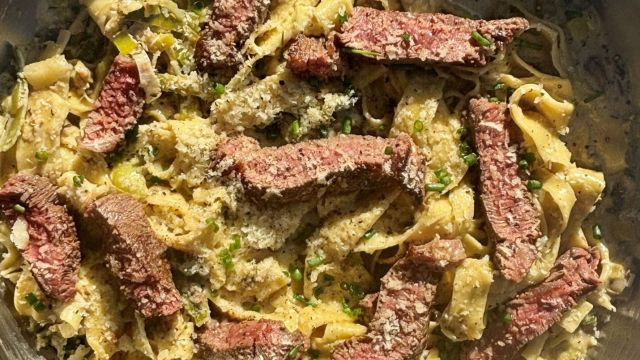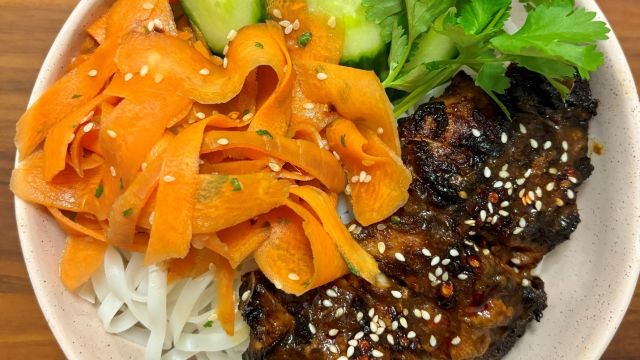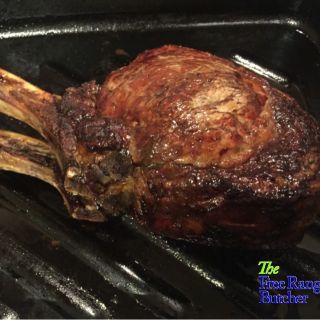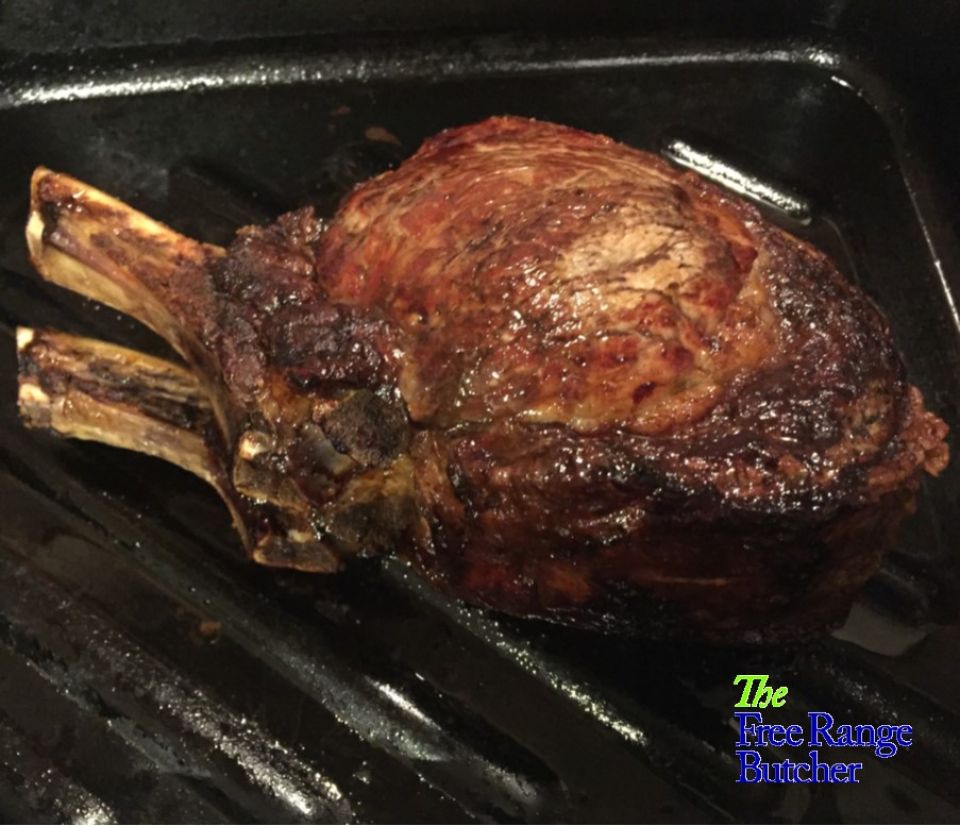Why and How to Sear Meat
I admit that I don’t always do this step, but when I do, I’m always reminded of why it’s worth the effort. And if I’m doing something special like a Standing Rib Roast, I’ll definitely do it.
First things first, why do you need to sear meat? The number one reason for searing meat is FLAVOUR. The combination of the meat hitting a super hot pan and the resulting caramelisation that occurs is what delivers the beautiful flavour.


How to Sear Meat
- A hot pan is key to getting the caramelised crust you’re looking for – don’t use a non stick pan
- Add some oil to the pan and when it starts to bubble and smoke a tiny bit, you’re ready to add your meat to the pan
- While you’re searing your meat, swirl the oil around the pan so it’s evenly coated and is making a continuous thin coating under the meat
- Just like cooking a steak – resist the temptation to turn! The meat needs a few minutes on each side to do it’s thing. You’ll notice that it will stick to the bottom of the pan when you first turn it to an uncooked side, but it will naturally come unstuck once it’s seared.
- If you’re cooking cut pieces of meat (e.g. to go in to a casserole), make sure you have a single layer with space in between each piece of meat. You may need to sear the meat in batches.
- You can test if it’s seared and ready to be turned by giving the pan a gentle shake. If the meat moves, it’s comes unstuck and is ready to be turned to another side.
- Once all sides are seared, transfer the meat to your roasting pan, slow cooker, or whatever method you’re using and continue the cooking process.

About Alison Clinch
Alison Clinch has 20 years marketing experience gained in small and medium size business. She is especially passionate about supporting local communities, communications, and brand management. In her role with The Free Range Butcher Alison is responsible for the company’s branding, promotion, advertising and website. Her experience in the kitchen and passion for good food also brings refreshing new ideas for our recipe suggestions. Initially working alongside her husband Ben at the farmers markets, Alison is more ‘behind the scenes’ now, and keeping busy with two young apprentices’ / kids, Tom and Georgia.
Latest Articles
Latest Articles

Creamy Steak and Leek Pasta
This Creamy Steak & Leek Pasta is hearty, silky and packed with rich savoury flavour. Tender slices of pan-seared rump steak sit on top of a creamy leek and mushroom sauce that coats every stra…

Vietnamese Lemongrass Chicken Noodle Bowl
This Vietnamese Lemongrass Chicken Noodle Bowl is fresh, fragrant and full of punchy flavour, everything you love about Vietnamese street food in one easy, vibrant bowl. Juicy lemongrass-marinated …

Mexican Beef & Sweet Potato Bowl
This Mexican Beef & Sweet Potato Bowl is a high-flavour, high-colour dish that ticks every box—protein-packed beef, crispy spiced sweet potato, fresh veggies and a creamy Mexican-style sauce to…
Copyright © The Free Range Butcher.









Leave a Reply